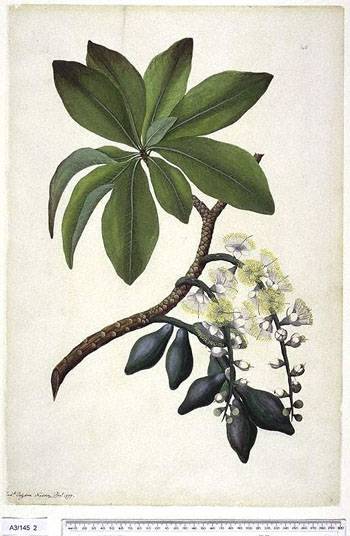Museum Palaeontology scientists Silvia Bello and Chris Stringer—with Simon Parfitt from University College London—have produced a fascinating paper (Bello et al., 2011) on the post-mortem treatment of human bodies in the UK in the Magdalenian period, around 14,700 years ago.
Ancient human cannibalism and use of skulls as cups—it is an inherently fascinating view of the distant past and the unfamiliarity of cultural practice, and of the Museum science that makes this view possible.
The remains from Gough’s Cave in Cheddar Gorge, Somerset, were thoroughly cleaned of flesh soon after death, leaving characteristic scratches and marks, and the crowns of the skulls were skilfully isolated by cutting around the skull, breaking the bone along a horizontal line and tidying the broken edge to give a more even effect.
Given comparisons with the preparation of animal remains in the same site, it seems likely that the flesh was removed to be eaten—bone marrow was also extracted from human bones by breaking them in the same way as animal bones. But why the treatment of the skull in this way?
These practices are also known from other European sites of the same period, and human skulls have been prepared as vessels in a number of cultures to quite recent times—in some cultures it is not uncommon to prepare and use human tissue for particular purposes associated with funerals or other rituals. In the case of Gough’s Cave, we can observe the behaviour but when it comes to explaining the reasons we can only speculate.
Removal of tissue in this way and preparation of the skull required complex use of tools and probably needed considerable practice. Scientific examination of the remains of five people, ranging from an older adult to a three-year old child, required the use of advanced imaging equipment to define how the cuts were made, and radiocarbon dating.
Scientific research on human evolution is an essential part of the Museum’s work: our common human origins, relatives and ancestors; human variation; and the impacts of disease and life events are some of the major foci of interest. A collection of almost 20,000 remains are cared for in the Museum from all parts of the world, with around 10,000 from the UK, and provides an essential resource for research.
The work overall casts light on the complexity of the human story and our origins, and the connections between modern and ancient groups of people—both genetic and cultural. Humans have been a highly mobile species, adapting to many different environments and developing a wide range of cultural practices over time.
The work of Chris and Silvia in the collaborative Ancient Human Occupation of Britain (AHOB) project shows a pattern of successive groups of humans moving in and out of Britain over the past million years as climate and environment changed. The people at Gough’s cave, at less than 15,000 years, are relatively recent in this context.
We might argue that part of the fascination and popular interest of this science is the connection with ourselves, pursuing the instruction to “know thyself” by Socrates. Given the apparent consumption of humans by these people, one might also suggest an early and rather too literal enthusiasm captured in the aphorism of Brillat-Savarin “Dis-moi ce que tu manges, je te dirai ce que tu es”: tell me what you eat, I will tell you what you are.
There is active scientific debate on human evolution and variation, human behaviour and the meaning of behaviour. The physical and behavioural similarities and contrasts between people in different places and times are compelling and often examined.
Part of the interest of this particular work is that the remains provide evidence on both physical form and behaviour, and this is where there is debate on whether the term “modern” is relevant or useful in understanding. We think about physical modernity in terms of similarity to living people, but what of behaviour?
Although in simple terms these people would be described physically as modern humans—there is very little physical difference from living people—given the strangeness of the practices in Gough’s Cave to our culture, it might have been assumed in the past that these people were somehow different from modern-day humans in terms of their essential nature: possibly, in crude terms, more primitive in some way.
A paper just published by John Shea (2011) is a useful focus for the scientific debate, arguing that to think of certain behavioural characters as representing “modern” humans is problematic because it is based too much on evidence from European archaeology. He argues that we should not see the evolution of human behaviour in progressive terms, but instead as a process giving rise to a much more variable set of characteristics that cannot as such be used to define modern humans.
This paper is a focus of active debate in science, and the pattern of thinking, research and discussion in this area of science is constantly changing: was there a sudden evolutionary leap that made us what we are? Was there a cultural or linguistic revolution of some sort? Did our ancestors start to think in different ways at a particular time, and why? How can genetics inform our understanding? What does new archaeology suggest? What makes us what we are, and are we in essence the same as those people in Gough’s Cave?
Bello SM, Parfitt SA, Stringer CB (2011) Earliest Directly-Dated Human Skull-Cups. PLoS ONE 6(2): e17026. doi:10.1371/journal.pone.0017026
Shea, JJ (2011) Homo sapiens Is as Homo sapiens Was Current Anthropology Vol. 52, No. 1 (February 2011), pp. 1-35. DOI: 10.1086/658067




